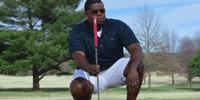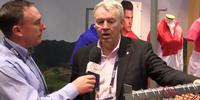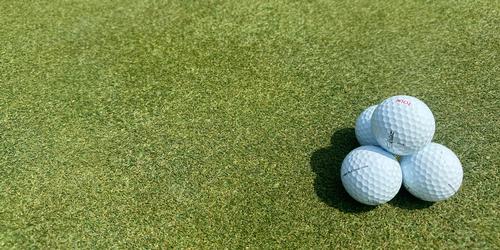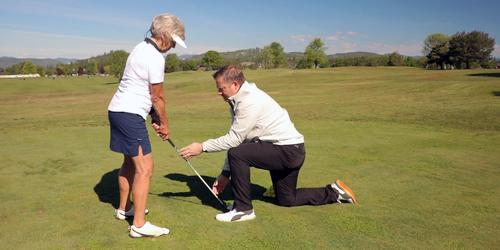Swing Thoughts: Manuel de la Torre....on Hogan, Aging, Length and Planes
By John Ehle
My lesson with Manuel had lasted for a very generous hour, as usual, and had focused on a problem which had become complicated by my attempts to "fix" it on my own. As in years past, I realized that it was time for a spring "tune-up".
I've learned over the years that a lesson with Manuel was in no way related to, for example, listening to a professor expound on Keynesian economics. The lesson with Manuel is not a "sit and get" experience. It is interactive.
Manuel challenges his students to relate what they're attempting to do with the golf club and if the description is vague or unrelated to the thought process, very precise probing questions will be forthcoming. Expect to be pressed for details. High expectations.
This day my loss of distance because of a weak flare became the point of instruction. My inability to swing the club from square to toe-up, back to square and through to toe-up and follow-through was producing an open club face and the irritating result. First, small swings to amplify the incorrect position of the clubface; then guided practice in an attempt to ingrain the appropriate pass and follow-through. "toe up, toe up" was the mantra. "Picture the shot from beginning to end. Use your mind." Hmmm.
Swing thoughts can be as elusive as ball bearings in 10W-30 and this was no exception. After a series of full swings the result began to improve. The words "picture" and "visualize" were repeated and, occasionally, the fortifying "very good!" His belief that one has only to "picture" the swing for 2.5 seconds is compelling. Multiply this number by 90 and the product is less than 4 minutes of actual concentration; not much in the context of a four hour round.
Manuel's father, Angel, took him to see Ben Hogan whenever he could. "Hogan's tempo was always the same. Everything he did, tipping his hat, tossing away his cigarette, chipping his ball; all the same tempo. Hogan operated in a vacuum that he created. Tiger doesn't behave that way. Tiger can concentrate when necessary and says, 'Nothing in the world is as important as what you have to do at that moment.'" When the moment is over, on to other things.
Manuel says of the most prevalent problem he sees on the lesson tee: "Men are unable to accept the fact that because of the decrease of flexibility in their shoulders that their swings will become shorter. They will not be able to hit the ball longer distances in spite of technology".
On swing planes. "There are actually thirteen swing planes but I don't talk about any of them when I teach. It stands to reason that if you are 6'3" tall that your swing plane will be different than mine (about 5'9")".
"The golf swing is a circle. To make a circle you must have a center. To hit the ball straight you must return to the center."
"You can't change the center and still get back to the ball".
A corollary: "If you are misaligned, your brain will attempt to direct you back to the golf ball to propel it in the correct direction. This causes all sorts of complications, none of which leads to a well-directed shot".
Part 2
Toe Up, Square, Toe Up; Potential, Distance and Aging, Accuracy and Seve
As Manuel and I worked through the topics on my list of questions, he said these words in response to a question about his mentor, Ernest Jones, whose mantra was "Swing the clubhead". "The words can give you a different picture".
"I began my teaching career with those words but I realized that my students often misunderstood what that meant. Eventually I changed the words to 'Swing the whole clubhead' because the original thought apparently gave the student a different picture than what I was trying to convey. Somehow my students got the impression that they should be 'lifting'".
I don't remember exactly when Manuel began to tell me to "visualize" what I was trying to do but during our May 12 lesson he used it often as he urged me to go "toe up, back, toe up". Those 2.5 seconds (or less) were now inhabited by the image of that movement and were no longer dependent just on words alone. My practice sessions since that day have been very simple; image-laden and not focused on words alone. An interesting change for someone as surrounded by words as a writer can be.
On sports psychologists: "There were no sports psychologists; we simply went to a corner of the range and worked it out. I was fortunate to have my father there on occasion."
Length was not part of the general topics of discussion when Manuel was on the Tour. "It was not unusual for several of us to hit 14 fairways and the 3 pars," he said. "The emphasis on length has changed the game so profoundly that if a player were to hit 14 greens now he/she would be seen as a genius."
On balance and the weight shift: "If the center moves in your backswing how can the golf club return there? The weight ends up on the front foot just as it does when a baseball player makes a throw. The action is complete."
On potential; "Each of us has a finite amount of potential. We are becoming older and we cannot stop that. I challenge the marketing efforts of companies; 20 more yards from this ball or that driver. That's 100 yards every five years!"
On the game; "It is the hardest game in the world but the golf swing is very simple."
On every second shot of every hole one plays:"How many times are you able to hit that shot?"
"Every one is different. When you expect a human being to do something perfectly for the very first time in their life, you're expecting a miracle! Those shots are each unique."
"We must accept imperfections as part of the game. Perfectionism keeps you working to be good but it can kill you too!"
Manuel's father, Angel, had a little different way of describing being 'in the moment'. He would say, "You pay attention to what you have to do at the moment you have to do it."
On second chances:"That is what makes the game so difficult. Unlike baseball players who get, potentially, many chances to hit the ball....especially if you include foul balls."
On practice; "You have to practice with a goal in mind. Take your wedge and your 7 iron to the practice tee and hit a variety of shots with each club. Whether it's 15 minutes or 2 hours.....hit many shots with those clubs with varying distances and trajectories. Why do you think people have four wedges and hybrids in their bags? No variety."
And, finally on the genius of Seve Ballesteros: "When Seve was (in decline) that wasn't the person who we saw hit so many creative, miraculous shots. I believe that the brain tumor had started to affect him. I saw him attempt to hit a shot up a hill four times. That wasn't Seve."
Manuel de la Torre may be reached at 414-352-5876 evenings between 9 and 10:00 pm to schedule a lesson.
Article Tags: Manuel de la Torre
Revised: 05/27/2009 - Article Viewed 40,684 Times
About: John Ehle
![]() John Ehle writes for GolfWisconsin.com, GolfTrips,com and other golf-related sites in the US. He has attended 6 Open Championships in the British Isles and many men's and women's US Opens and PGA Championships as well as Ryder Cups and President's Cups.
John Ehle writes for GolfWisconsin.com, GolfTrips,com and other golf-related sites in the US. He has attended 6 Open Championships in the British Isles and many men's and women's US Opens and PGA Championships as well as Ryder Cups and President's Cups.
His primary international writing is golf course reviews and travel articles. He also writes about golf equipment and other golf-related products. Most recently he traveled to Cuba and will be in SE Asia for 6 weeks in February and March, 2012.
He writes a weekly column for a metropolitan newspaper in the Milwaukee, Wisconsin area. He is a 10 handicap golfer and has competed in many Wisconsin State Golf Association events.














